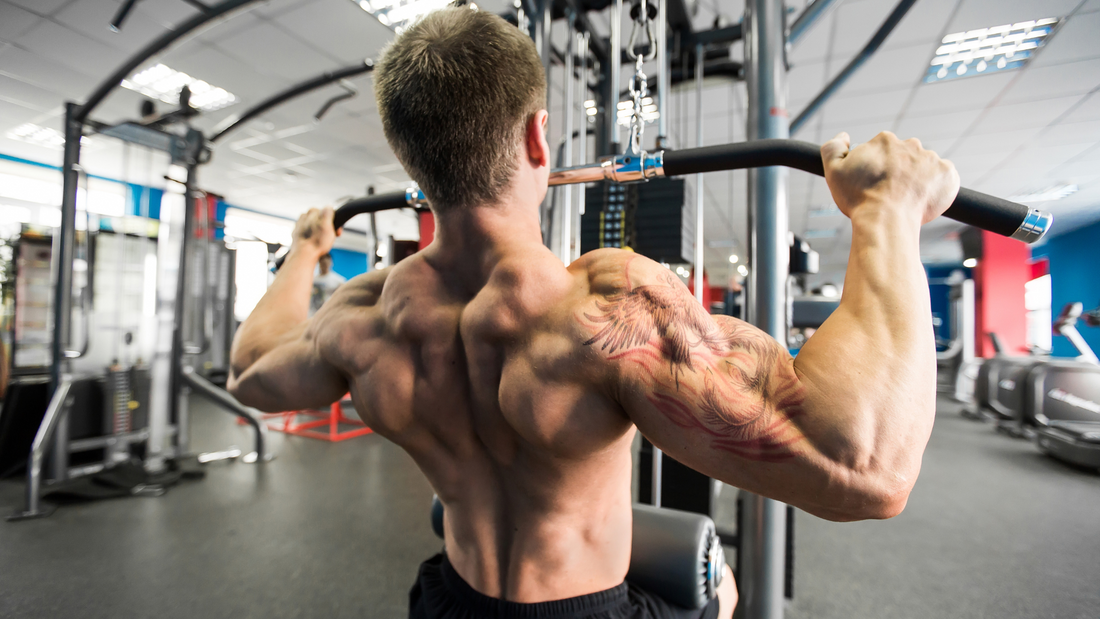Muscle Activation:
One difference between wide grip and close grip lat pulldowns lies in muscle activation. Here's a breakdown of what each variation emphasizes:
-
Wide Grip:
This study found that using a wide pronated grip generated the most electrical activity in the latissimus dorsi muscle when compared to other hand positions. Another study found that a wide anterior grip produced greater muscle activity in the latissimus dorsi than supinated or close grip pulldowns, suggesting that a wide grip lat pulldown might be most effective for someone wanting to maximize lat growth. -
Close Grip:
A supinated close grip position places a slightly greater emphasis on the biceps due to the mechanics of the exercise. A 2017 study found that pectoralis major and rectus abdominis (the posterior muscles of trunk) showed higher muscle activation when using a narrow grip.
Range of Motion (ROM):
Another crucial factor to consider in lat pulldowns is the range of motion (ROM) you achieve. This refers to the distance your arms travel throughout the exercise. Let's delve into how wide and close grips influence ROM, impacting both muscle growth potential and joint safety.
-
Wide Grip:
A wider grip allows for a greater ROM, as your arms can travel further from a fully extended position to a point where your lats are fully contracted. -
Close Grip:
With a close grip, your hands are closer together, limiting the travel distance of your arms. This results in a shorter ROM, potentially leading to less lat activation compared to a wider grip.
Proper form in lat pulldowns helps strengthens the muscles that support your shoulders, leading to better joint health and potentially even heavier lifts in the long run. Let's dive deeper and explore how lat pulldowns can be your friend for both back gains and shoulder stability.
-
Wide Grip:
A wider grip allows for a more natural range of shoulder motion during the pull, which can be beneficial for many lifters, promoting better control and potentially reducing stress on the joint. However in the case of loose shoulders or struggles with maintaining proper form, the wider grip could lead to excessive external rotation, which can put stress on the joint.
-
Close Grip:
The closer hand position can limit some natural shoulder rotation during the pull, which can place less stress on the shoulders due to a more neutral arm position with less external rotation. This makes it a safer option for those with shoulder issues.
Loading Potential:
Let's shift gears and talk about loading potential – how much weight you can lift – with lat pulldowns. Grip width plays a surprising role here. While both variations target your back, they differ in how much weight you can move.
-
Wide Grip:
A wider grip keeps your biceps in a less dominant position, forcing your lats to work harder throughout the entire movement, which might mean lifting less weight.
- Close Grip:
A close grip creates a more advantageous leverage point by putting your elbows closer to your body, creating a stronger biomechanical position for pulling, and incorporates your biceps, allowing you to lift heavier.
Ultimately, the best grip choice depends on your goals, and overall, the research shows that any grip width from narrow to wide seems to be effective for lat growth. Variations offer fairly minor advantages in muscle activation, with a wide grip prioritizing the upper lats and middle trapezius, and a close/medium grip focusing more on the pectoralis, rectus abdominis, and biceps brachii. When it comes to ROM, wide grip offers a greater stretch but demands stricter form, while close grip prioritizes shoulder stability, bicep involvement, and allows for heavier weights. Choose the grip that best suits your flexibility, strength level, and fitness goals.

